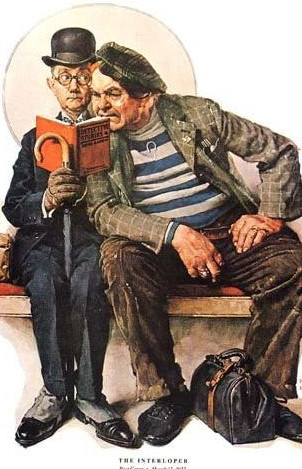Literacy Blogs
- All
- 3-cueing
- academic learning time
- academic vocabulary
- accommodations
- accountability testing
- Active View of Reading
- adolescent literacy
- afterschool programs
- alphabet
- amount of instruction
- amount of reading
- argument
- assessment
- auding
- author awareness
- automaticity
- balanced literacy
- beginning reading
- Book Buddies
- Book Flood
- challenging text
- classroom organization
- close reading
- coaching
- cohesion
- Common Core State Standards
- complex text
- comprehension strategies
- content area reading
- context analysis
- curriculum materials
- Daily 5
- decoding
- departmentalization
- DIBELS
- dictionary skills
- digital texts
- disciplinary literacy
- dyslexia
- early interventions
- effective teachers
- Emily Hanford
- executive function
- family literacy
- fingerpoint reading
- foundational skills
- graphic novels
- guided reading
- heterogeneous grouping of students
- homework
- improving reading achievement
- independent reading
- independent reading level
- informal reading inventories
- informational texts
- instructional level
- invented spelling
- jigsaw instruction
- knowledge
- leadership
- learning disabilities
- Lexiles
- linguistic comprehension
- listening comprehension
- literacy charities
- literacy policy
- literary interpretation
- main idea
- morphology
- motivation
- narrative text
- National Early Literacy Panel
- nonsense words
- oral language
- oral reading fluency
- paraphrasing
- Pause, Prompt, Praise (3P)
- personalized learning
- phonemes
- phonemic awareness
- phonics
- press and media
- principals
- prosody
- Readers' Workshop
- reading comprehension
- reading disabilities
- reading intervention
- reading levels
- reading models
- Reading Recovery
- reading research
- reading skills
- reading strategies
- reading to children
- reading wars
- reading-writing relations
- remedial reading
- rereading
- Response to Intervention
- Scarborough's Rope
- science of reading
- seatwork
- semantics
- sentence comprehension
- sequence of instruction
- set for consistency
- set for variability
- shared reading
- shared reading
- sight vocabulary
- simple view of reading
- Simple View of Reading
- small group instruction
- social studies
- sound walls
- Special Education
- speech-to-print phonics
- spelling
- stamina
- summarizing
- Sustained Silent Reading
- syllabication
- syntax
- syntax
- testing
- text complexity
- text interpretation
- text reading fluency
- text structure
- theme
- think-pair-share
- trauma
- visualization
- vocabulary
- word walls
- writing
- zone of proximal development (ZPD)
What it Means to Teach
I was recently reading a draft of a doctoral dissertation. I was eager to read it because it was written by a smart student who I know to be a good teacher, and who has focused on important issues in literacy education. But, I was disappointed. The study looked at how students thought about and reasoned about the complex information that they were asked to read. The scholar had challenged the kids with a collection of complex texts and videos. The reason for my chagrin was not the design or results of the study, but the reaction of the researcher. The kids ...
The Fine Line Between A Problem and an Excuse
Recently, Diane Ravitch had an article in the New York Times. One of the things that she said was that, “If every child arrived in school well-nourished, healthy and ready to learn, from a family with a stable home and a steady income, many of our educational problems would be solved.” This is a familiar echo of an earlier David Berliner article, “Our Impoverished View of Educational Reform,” in which he emphasized the educational importance of poverty and its horrifying off-shoots: ill nourishment, lead-paint poisoning, psychiatric disorders, drug/alcohol abuse, inadequate housing, and so on. And who can disagree? Poverty is horrible, ...
Comparing the Common Core and Reading First
Sorry about not posting for a while. I've been particularly busy, and even worked in a vacation. But my eye is back on the ball and I hope I have something of interest for you. Recently, I received a letter: “I am writing to you because members of our state’s Department of Education believe that there is no alignment between the Common Core Standards and Reading First. Do you know of any document that aligns these two approaches for the early grades?” Clearly, the writer is concerned that the gains and improvements made through Reading First may be lost as attention ...
Okay, principals, why are manhole covers round?
Human resources specialists kill me. They love to ask prospective employees weird questions with the idea that the out-of-leftfield approach will catch the job seekers off guard and get them to reveal themselves. (Barbara Walters did the same thing for years in her TV interviews of celebrities: “If you were a tree, what kind of tree would you be?” Kind of makes you want to cry.) I was asked recently by a reader of this blog what questions I would ask a prospective principal to make sure that I made the right hire. It’s a great query and I wasn’t ready ...
What is the Biggest Literacy Teaching Myth in 2011?
While in graduate school, I worked with Jack Pikulski and became interested in the theory of instructional level. That’s the idea that text has a particular level of difficulty and that students learn best when they are matched with text in a particular way. If text is too hard, they won’t learn to read and if text is too easy they won’t make any progress. The difficulty levels in between those extremes (and there are usually levels and not a single level), are thought to be the levels at which instructional progress would be optimum. It makes logical sense. If text ...
Early Literacy Questions and Answers
Last week I did a webinar in which I shared the results of the National Early Literacy Panel (NELP), which reviewed research on literacy development and instruction with preschoolers and kindergarten (there is a link to the report in the right hand margin of my site). I was asked if I would answer questions mailed in by the audience. I agreed, and below have included my answers. Thought they might be interesting to a larger audience, so here they are: 1. In our preschool classrooms, what are the top 5 techniques we should being using? Staying very close to the findings I would ...
Marilyn Adams on Text Complexity
Recently, the American Educator republished a chapter of Marilyn Adams. I have featured Marilyn’s input here before (thank you, thank you), but this recent pub is a must read as far as I’m concerned (and so I have included a link to it at the end of this blog). The good Dr. Adams documents how American textbooks have grown simpler over time. I’ve long believed that the measurement of text difficulty was a great scientific advance, but as useful as that tool can be, it has been a weapon of mass destruction when it comes to supporting students’ reading achievement. You ...
What Tree Octopi Can and Cannot Teach Us about Reading Comprehension
Blast from the Past: Originally published Feb 4, 2011; re-posted Oct 12, 2017. This week I read a paper by my friend Sam Wineburg and his colleague Sarah McGrew http://www.pbs.org/newshour/updates/column-students-cant-google-way-truth/. They are trying to figure out what the best way to make sense of the reliability and veracity of websites so that we can teach readers to be appropriately critical. Past reading studies--like the one discussed here--have promoted strategies that don't help very much. The Wineburg & McGrew approach is more promising. Are American kids such poor readers that they'll believe anything they read? I don't think so, but a recent news ...
More Helpful International Comparisons
Just before the holidays, I wrote about the misuse of international comparisons. I decried the notion that we should emulate Finland’s educational approach, though I covet their educational outcomes. My point was that the Finnish context differs too much from that of the U.S. for us to successfully follow such advice, and that, frankly, people are cherry-picking the features of other countries that they like best. So, if you don’t like accountability testing, find a country that is doing better than us but that isn’t testing much. While that may be rhetorically powerful it isn’t very helpful for reforming schools. Since ...
Finland's Success with Literacy
Like many who are interested in U.S. educational reform, I rely upon the international comparison data provided by PISA. But, as much as such statistics concern me, I’m always circumspect in their use, since there are real problems with such comparisons. For example, I trust the data on kids up to about 13-14 years of age, but not so much the secondary school data (since kids often get shifted around at those older age levels and they don’t all make it into the comparisons). Many anti-accountability types, like the teachers’ unions, for instance, have been touting Finland as a model of ...









